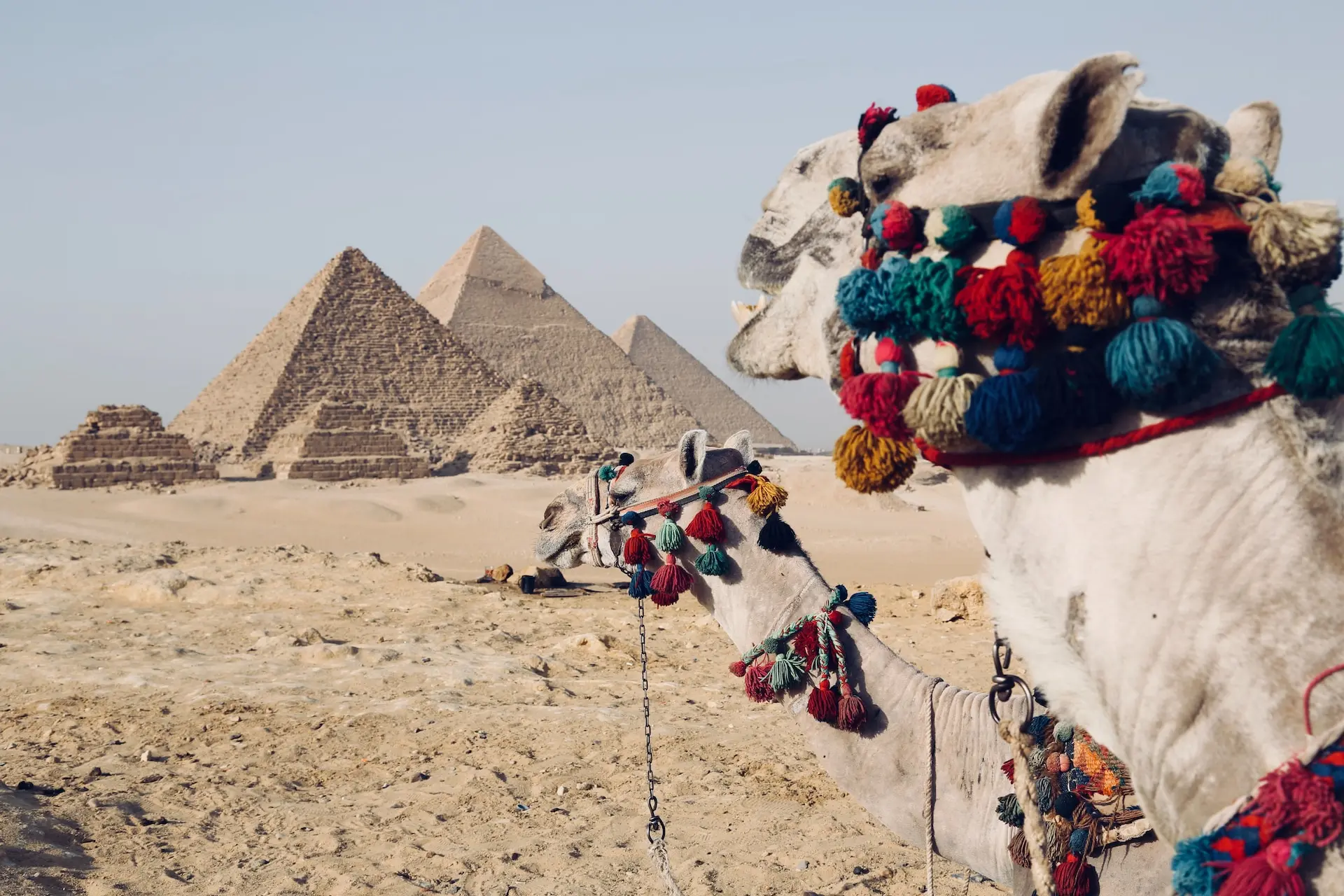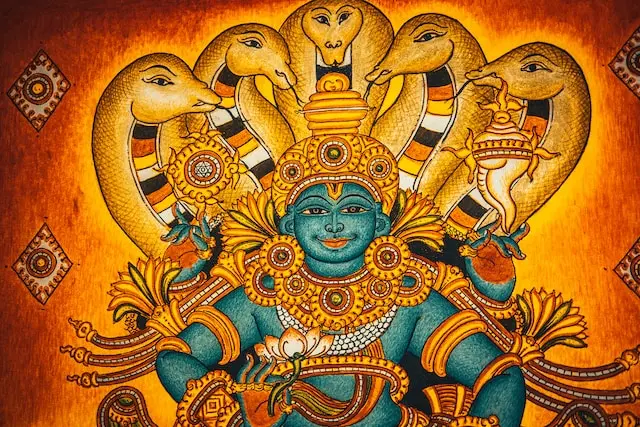The concept of the Choirs of Angels in Christian theology presents a fascinating celestial hierarchy, deeply rooted in the mysticism of the faith.
The development of this angelic hierarchy serves a greater purpose in the understanding of Christian cosmology as it reflects a divine order and the manifold ways in which these celestial beings interact with the human realm and the divine.
Each choir signifies a different aspect of God’s governance. This structure provides a framework for understanding the vastness of the spiritual world, bridging the gap between the divine and the human, and offering a glimpse into the mysteries of the heavenly realm.
Understanding these angelic hierarchies also enriches the Christian experience, offering insights into the nature of God’s interaction with the world, and the various ways in which divine will is manifested.
If you’re curious to learn more, read on!
Table of Contents
Toggle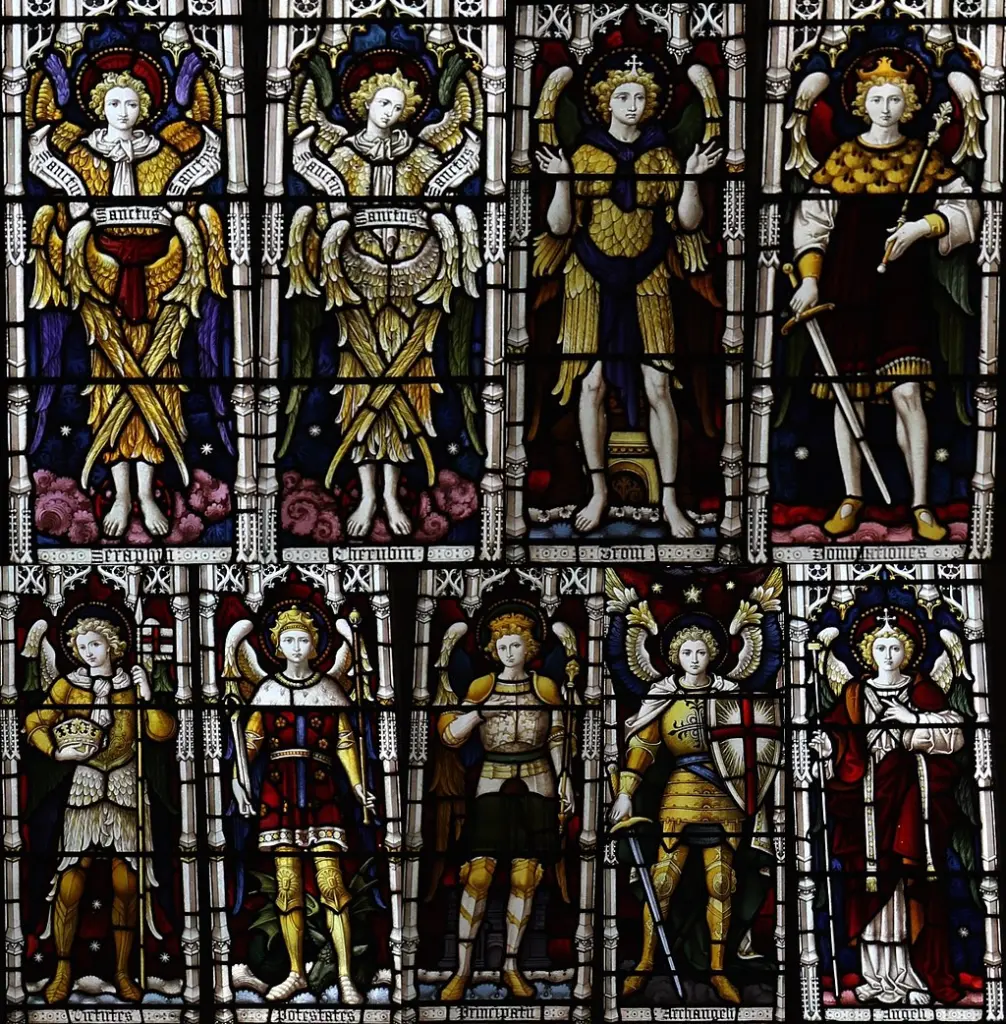
Theological Foundations
The origins of the angelic choirs draws extensively from biblical references and the writings of early theologians.
The Bible, although not explicit in detailing a structured hierarchy of angels, provides glimpses into the existence and roles of these celestial beings. Verses in both the Old and New Testaments describe encounters with angels. For instance, the Book of Isaiah’s vivid depiction of Seraphim and the Book of Revelation’s references to angelic beings suggest a complex but ordered celestial realm.
The most influential contribution to the concept of angelic hierarchies comes from Pseudo-Dionysius the Areopagite, a 5th century Christian mystic and theologian. His works, particularly “The Celestial Hierarchy“, profoundly shaped the Christian understanding of angels.
He categorized the angels into three spheres and nine choirs, based on their proximity to God and their roles. This organization reflects an orderly cosmos where each choir has a specific function, ranging from the contemplation of God to the execution of divine will in the human world.
What are Angels?
Angels, in Christian theology, are purely spiritual beings created by God. They are often depicted as messengers and servants of the Divine, embodying purity and obedience to God’s will. Unlike humans, angels are not bound by earthly limitations, although they are sometimes described as taking on human-like appearances when interacting with people.
The word “angel” itself derives from the Greek word “angelos,” which means messenger. This term aptly encapsulates their primary role in the biblical narrative – as divine messengers who communicate God’s will, guidance, and sometimes, judgments to humanity.
Angels are also seen as protectors, assigned to guard individuals and communities, and to lead them towards good.
Angels are distinct from humans in several ways. They do not possess physical bodies and are not subject to human needs or mortality. They are often perceived as beings of light, capable of existing in ways beyond human comprehension.
Additionally, angels are depicted as devoid of personal desires; their actions are entirely directed towards the service and glorification of God.
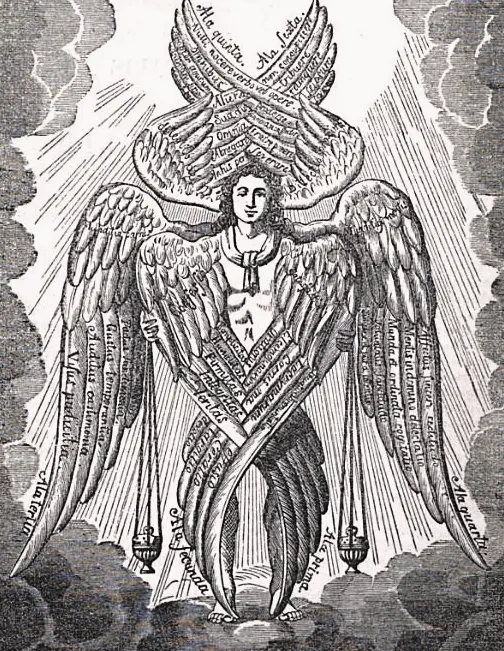
Understanding the Spheres of Angels
The Spheres of Angels represent different levels within the celestial hierarchy, each comprising specific choirs of angels. This structure signifies the varying degrees of closeness to God and the distinct roles played by each group of angels.
The spheres are typically divided into three main categories, each containing three choirs of angels, making a total of nine.
The higher spheres represent a closer, more direct contemplation of God, illustrating the aspects of God that are most transcendent. As one moves down the spheres, the roles of the angels become more immanent, focusing on the governance of the created order and direct interaction with human beings.
In terms of human understanding of the divine, these spheres offer a structured perspective on how divine will is manifested throughout the universe. They provide a framework for believers to conceptualize the different ways in which God interacts with His creation, from the most abstract and mystical to the most tangible and personal!
The First Sphere
Angels in the First Sphere are distinguished by their roles that symbolize the highest expressions of spiritual existence. They are entrusted with the responsibilities that require the closest proximity to God, such as the continuous worship of the Divine, the guarding of God’s throne, and the execution of divine justice.
Symbolically, the First Sphere represents the ideal of Christian spiritual life, which is to be in constant adoration and service of God. It highlights the aspiration to understand and relate more closely to the Divine.
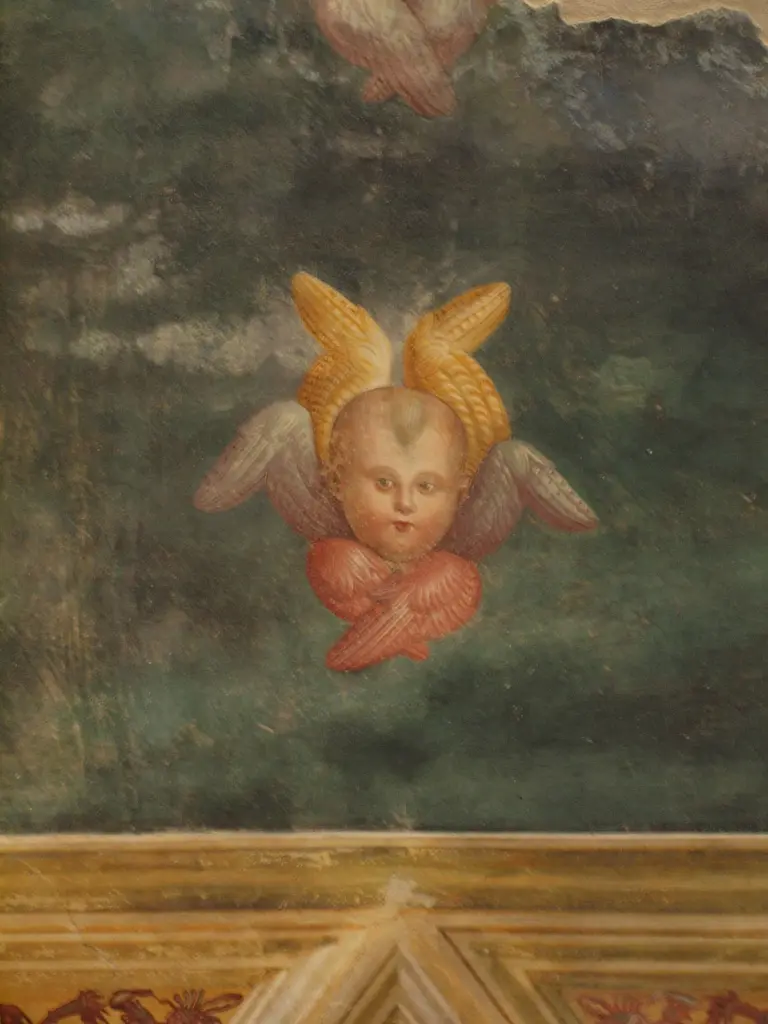
1. Seraphim
The Seraphim are revered as the highest order of angelic beings in the Christian celestial hierarchy, distinguished by their closest proximity to God. Traditionally depicted with six wings, they embody profound reverence and humility before God, symbolized by the wings covering their faces and feet, and their readiness to serve through the wings used for flight.
The name “Seraphim” itself, often interpreted as “the burning ones,” aptly conveys their burning love for God, and their role in illuminating and purifying with divine truth.
Their primary role is the unceasing worship and adoration of God. This is vividly depicted in the biblical vision of the Prophet Isaiah, where the Seraphim are seen continuously proclaiming the holiness of God, reflecting their embodiment of the highest form of love for the Divine.
This ceaseless worship is not just a duty but an expression of their very essence, continually glorifying God and mirroring His perfect holiness. In the broader context of Christian mysticism, the Seraphim symbolize the transformative journey of the soul towards divine love and unity with God.
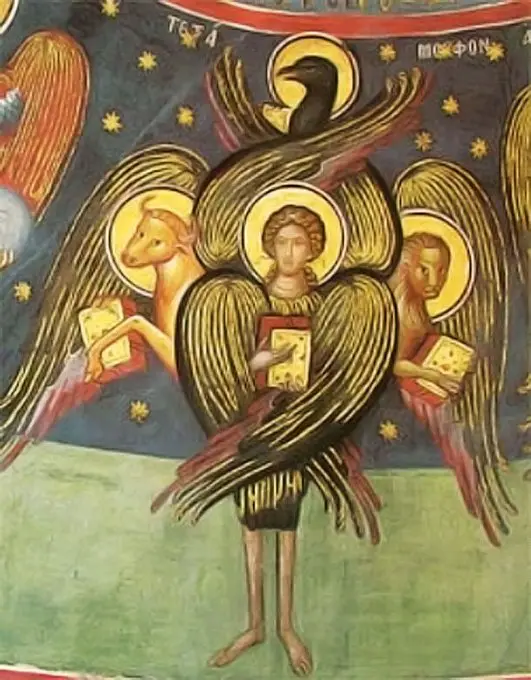
2. Cherubim
Unlike the popular modern depiction of cherubs as small, chubby infants, traditional Christian theology present the Cherubim as beings of great power and wisdom.
Characteristically, Cherubim are depicted with multiple wings and sometimes with multiple faces, as in the visions of the prophet Ezekiel where they are described with four faces—those of a man, a lion, an ox, and an eagle. This imagery symbolizes various attributes: the nobility of a lion, the strength of an ox, the swiftness of an eagle, and the intelligence of a man, encompassing the full spectrum of God’s creation. Their multiple wings further emphasize their capability to swiftly carry out God’s will.
In terms of their role, Cherubim are primarily tasked with guarding the divine secrets. This is exemplified in the Book of Genesis, where they are placed to guard the way to the Tree of Life. They are often seen as the guardians of the thresholds to God, standing between the divine and the created world, thus symbolizing the transcendence and inaccessibility of God.
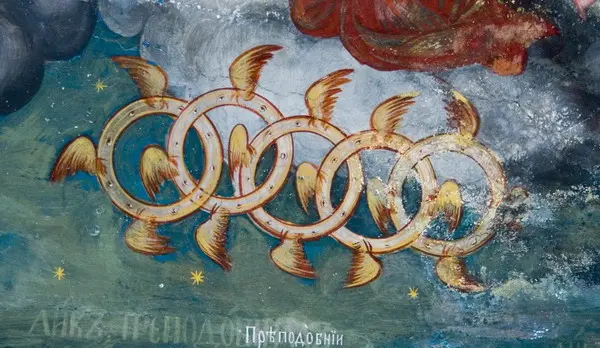
3. Thrones
The Thrones, or Ophanim, are often portrayed as one of the more enigmatic and abstract classes of celestial beings. They are typically depicted as great wheels, covered with many eyes, interlocking or encircled by each other, as described in the visions of the prophet Ezekiel.
This imagery symbolizes the constant vigilance and all-encompassing knowledge of God. The wheels represent the unceasing execution of divine order, moving in accordance with God’s will.
The primary role of the Thrones is intricately connected with bearing and administering God’s justice. They are seen as the foundation of God’s court in heaven, embodying the stability of the divine government.
The Thrones are believed to be the carriers of God’s decisions, especially those pertaining to righteousness. Their presence signifies the impartial and fair nature of God’s judgment, ensuring that divine will is executed with equity.
The Second Sphere
The Second Sphere represents the active execution of God’s will and the maintenance of divine order in the universe. The angels in this sphere are seen as administrators of God’s plans, ensuring that the universe operates according to the divine design. Their roles emphasize the Christian belief in a God who is not only transcendent but also immanent, actively involved in the governance and upkeep of creation.
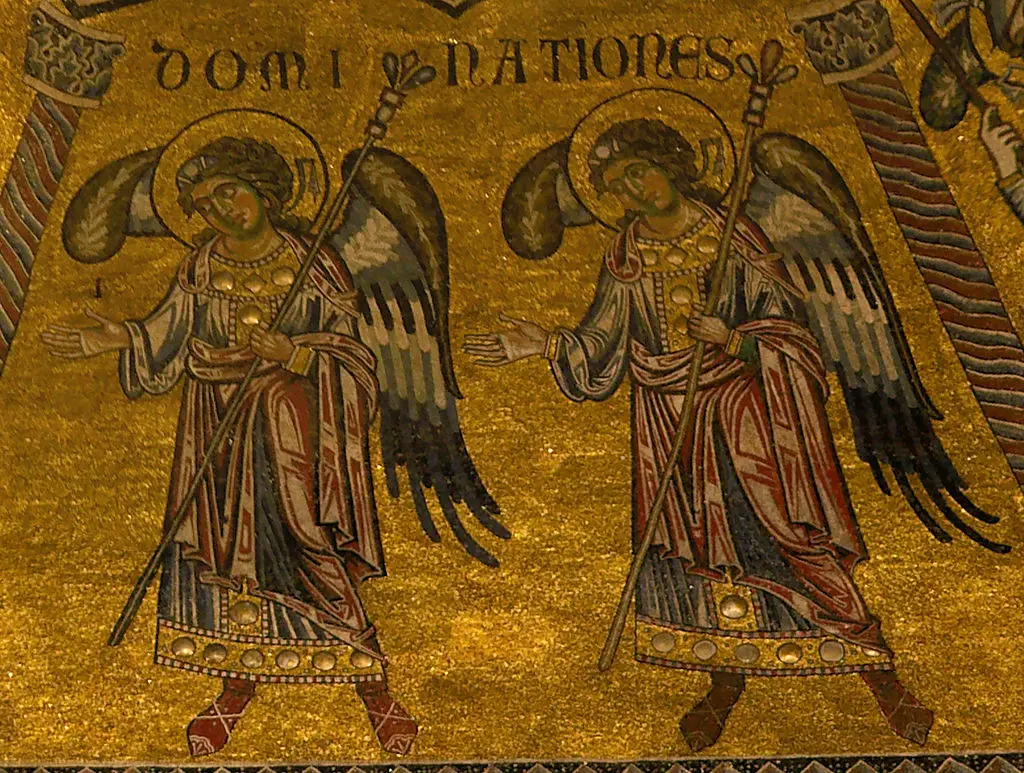
4. Dominions
Dominions, also known as Dominations, are the overseers of the duties of lower angels, ensuring that the cosmos remains in order and that divine decrees are executed.
Dominions are often portrayed as divinely noble and authoritative beings, exuding a sense of serene majesty. They are typically depicted with scepters, orbs, or staffs, symbolizing their governance over other angelic choirs.
Their primary duty lies in regulating the tasks of lower angels. This involves ensuring that the cosmos and its inhabitants adhere to the divine plan. Dominions delegate responsibilities to the Virtues and Powers, the next orders in the angelic hierarchy, to maintain the balance and order of the universe. They act as a bridge between the divine decrees of the upper echelons and the actions of the lower choirs.
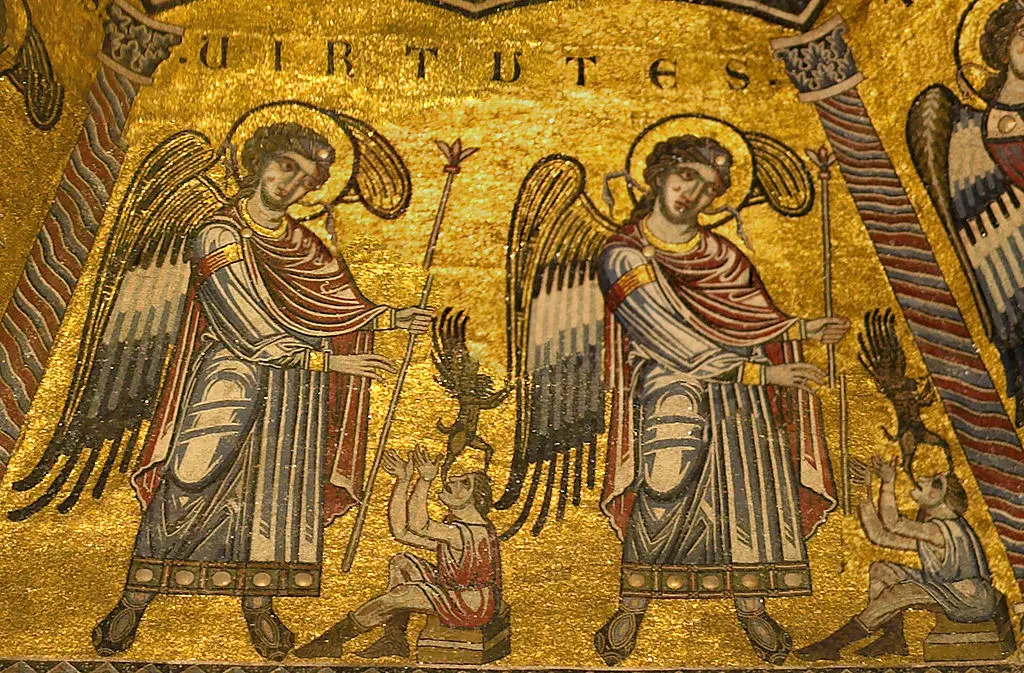
5. Virtues
Characteristically, the Virtues are depicted as valiant, often portrayed in art as courageous warriors of light. They are believed to be endowed with a special grace that allows them to manifest God’s power in the world. In contrast to the Dominions, who oversee angelic duties, the Virtues are more actively involved in performing the tasks themselves, particularly those requiring courage.
Their primary function involves the actualization of God’s power, especially in the form of miracles and the strengthening of faith among believers. The Virtues are believed to be responsible for the signs and wonders that are seen in the world, acting as channels for divine interventions.
They are also associated with empowering individuals, granting them the strength and courage needed to face spiritual challenges and to grow in their faith and moral virtues. They are thought to assist people in developing moral virtues, guiding and strengthening them in their journey towards holiness.
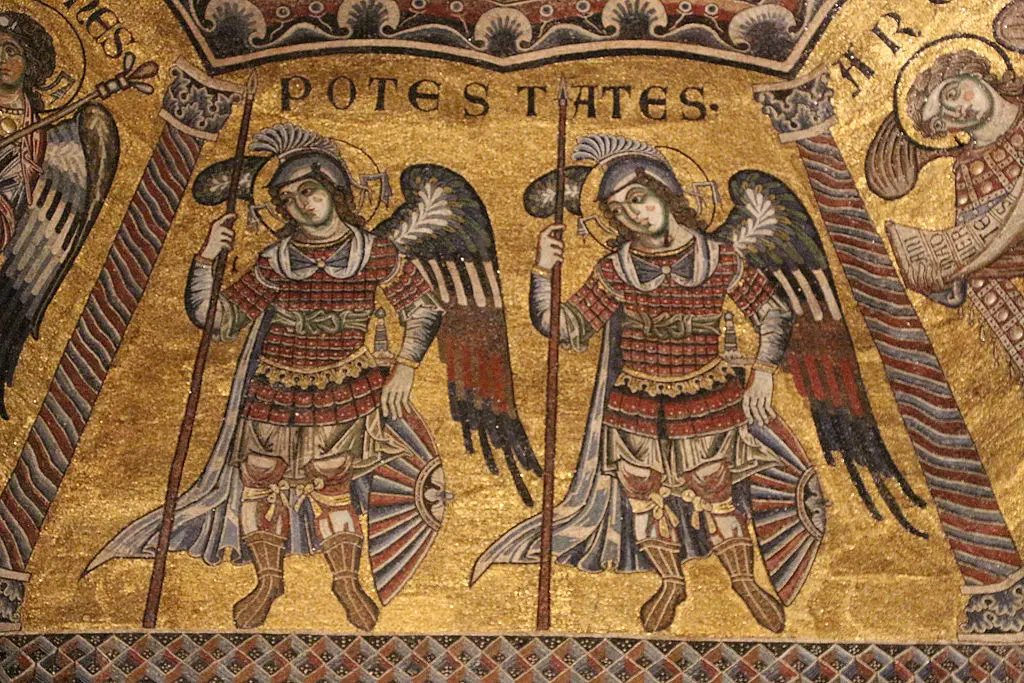
6. Powers
The Powers, also known as Potentates, occupy a significant role particularly in the context of spiritual warfare.
In nature, the Powers are often envisioned as militant angels, embodying the strength necessary to combat spiritual evils. They are seen as warriors of God, equipped with the power to resist any form of rebellion against divine will.
Their depiction often includes armor or weapons, signifying their readiness to engage in spiritual battles to uphold cosmic and moral order.
They are tasked with guarding the cosmos against the destructive forces of evil and maintaining the balance and harmony of the universe. This includes regulating the forces of nature and the spiritual energies that influence the world, ensuring that creation operates according to divine laws.
In their role in spiritual warfare, the Powers are seen as frontline defenders against demonic forces. They are believed to provide protection against spiritual assaults and to empower individuals to resist temptations and spiritual deceptions. Their presence symbolizes the ongoing struggle between good and evil, both in the spiritual realm and within the human heart.
The Third Sphere
The Third is characterized by its direct involvement with the human world, making it the most relatable and interactive segment of the angelic order for many believers.
The Third Sphere represents the tangible presence and intervention of the divine in the human realm. This sphere serves as a reminder of the close relationship between God and humanity, with angels acting as intermediaries who bring divine guidance and protection to the human world.
The angels in this category are often the most recognized and venerated in religious practices, with many people seeking their intercession and guidance in prayer and devotion.
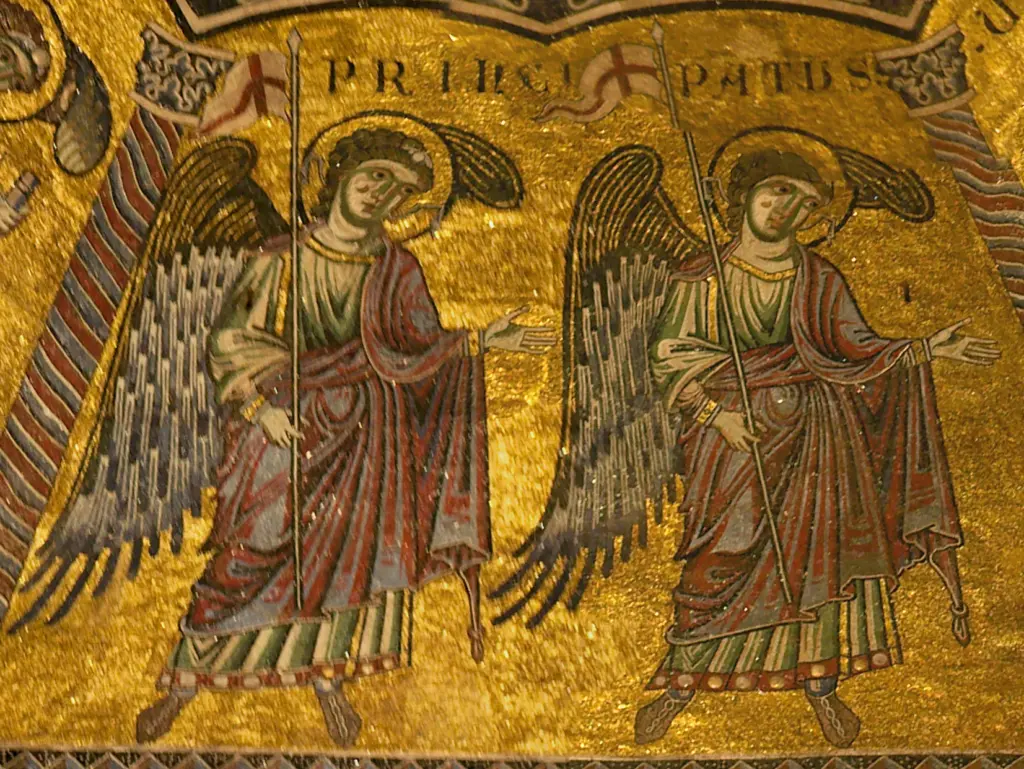
7. Principalities
The Principalities form a distinctive group within the angelic hierarchy, known for their guardianship over nations and leaders and their influence in the material world.
They are typically represented as carrying scepters or crosses, or sometimes with a crown or orb, symbolizing their oversight over earthly realms.
The Principalities are believed to oversee and guide the collective spiritual and moral welfare of different groups of people. They are tasked with guiding and influencing the earthly governance structures, ensuring that they align with divine purposes.
This includes providing direction to political and religious leaders, helping them to enact just and moral policies and to lead their people in accordance with God’s law.
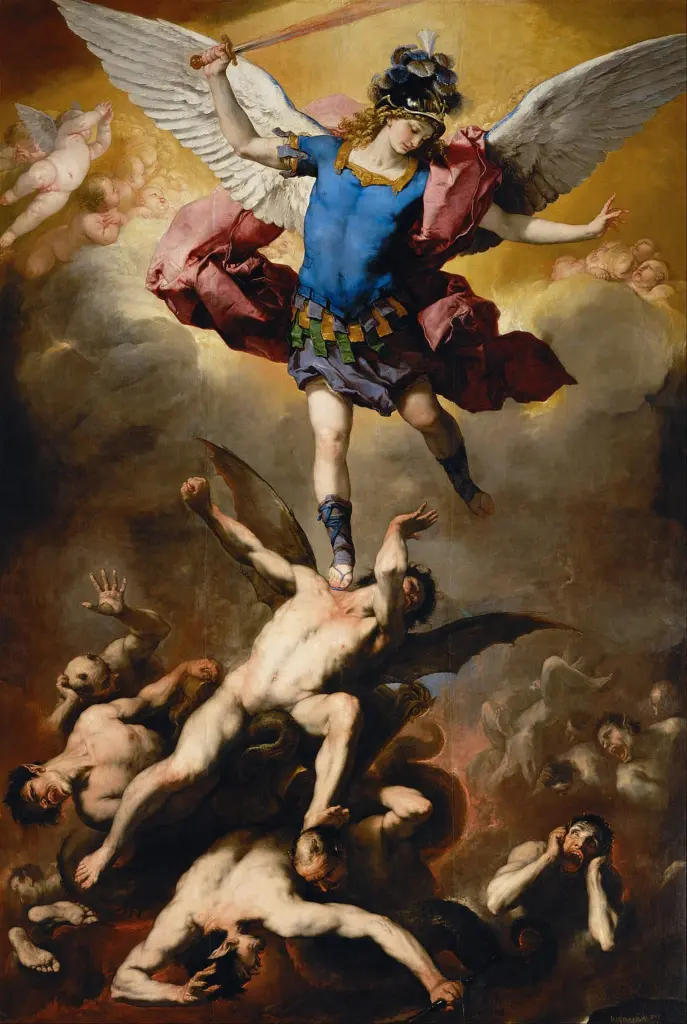
8. Archangels
The characteristics of Archangels are marked by their powerful presence and ability to communicate divine messages directly to people.
They are often depicted as majestic and imposing figures, radiating strength and authority. Among the most well-known Archangels are Michael, known for his role as a protector and leader in spiritual battles, and Gabriel, renowned for delivering important messages from God, including the Annunciation to the Virgin Mary about the birth of Jesus.
The primary role of Archangels in delivering God’s messages highlights their function as intermediaries between the divine and the human. They bridge the gap between heaven and earth, bringing guidance, warnings, and revelations to humanity as a whole.
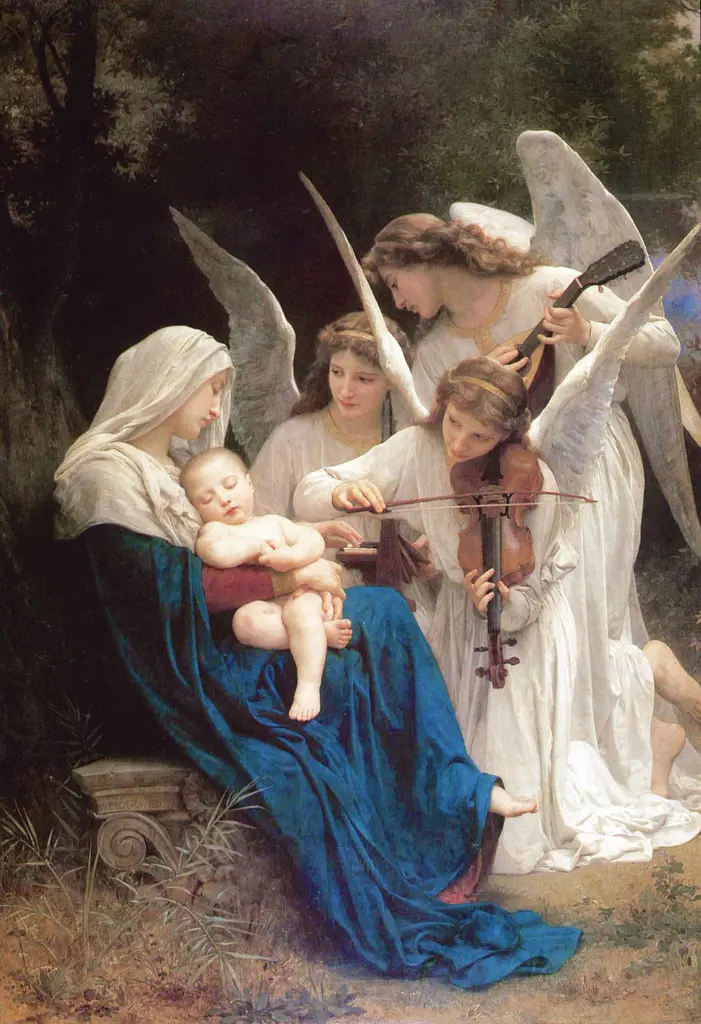
9. Angels
Angels, often regarded as the most relatable and familiar of the celestial beings in the Christian tradition, serve pivotal roles that span from the spiritual to the personal in the lives of believers.
Angels are perceived as benevolent, spiritual beings created by God to serve as His agents. They are often depicted with wings, symbolizing their role as messengers between heaven and earth. Their appearance, when they choose to be visible to humans, is usually in a form that is comforting and reassuring, though they can also appear in magnificent and awe-inspiring forms.
The tasks of angels are diverse, ranging from delivering messages from God to offering guidance and protection to individuals. They are often involved in significant biblical events, such as announcing the birth of Jesus to the shepherds or delivering messages to the prophets.
The concept of personal guardian angels holds a special place in Christian belief. These angels are thought to be assigned to individuals, offering guidance, protection, and support throughout their lives. The belief in guardian angels is rooted in the idea that every person is watched over and cared for by a divine presence, offering a deep sense of comfort and security to believers. These angels are thought to intervene in subtle ways, guiding and protecting individuals from harm and helping them navigate through life’s challenges.

